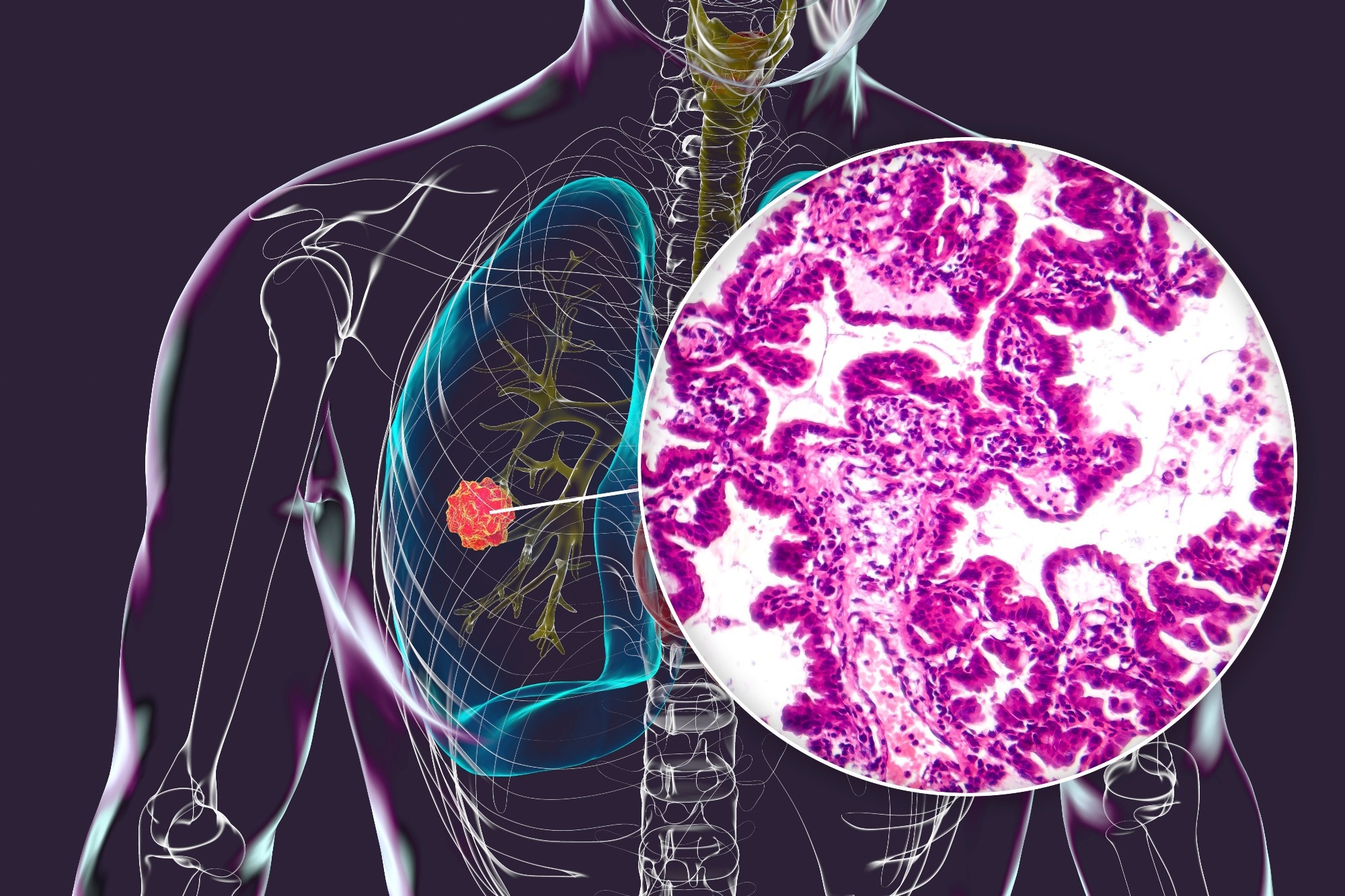Health
AI Tool EAGLE Streamlines Lung Cancer Mutation Detection

A groundbreaking artificial intelligence tool known as EAGLE has been developed to analyze lung cancer biopsy slides in less than an hour. This innovation promises to accurately predict crucial mutations associated with lung adenocarcinoma (LUAD), thereby reducing delays, costs, and the loss of valuable tissue samples. The findings, published in Nature Medicine, mark a significant advancement in precision cancer care.
The study focused on creating a computational model for detecting mutations in the epidermal growth factor receptor (EGFR), which is the most prevalent somatic mutation in kinase genes and essential for determining the appropriate first-line therapy for lung cancer patients. Accurate testing for EGFR mutations is vital, especially for patients with advanced-stage LUAD, as these mutations inform the best treatment strategies.
Despite the importance of EGFR testing, current rates are below established guidelines, often due to technical challenges in obtaining and processing biopsy samples. The EAGLE tool addresses these hurdles by utilizing digitized pathology slides stained with Hematoxylin and Eosin (H&E), allowing results to be generated without physical processing and at a fraction of the cost.
Details of the EAGLE Study
The EAGLE model was developed using a large international clinical dataset comprising 5,174 slides from the Memorial Sloan Kettering Cancer Center (MSKCC). The algorithm was fine-tuned to accommodate the biological and technical variability encountered in real clinical settings. Model validation was conducted using 1,742 internal slides and external cohorts from institutions across the United States and Europe.
In a silent trial, EAGLE demonstrated its clinical applicability by simulating real-world performance. The results of the rapid EGFR test were compared with those from the established Idylla test, which achieved a positive predictive value (PPV) of 0.988 and a sensitivity of 0.918. The model’s overall performance, indicated by the area under the curve (AUC), reached 0.847, although it was less accurate for metastatic specimens, with an AUC of 0.75 compared to 0.90 for primary samples.
The EAGLE model’s ability to detect clinically relevant EGFR mutations across various samples further underscores its robustness. In external cohorts, its performance closely aligned with internal validation results, achieving an AUC of 0.870.
Advantages and Future Directions
The EAGLE tool significantly enhances the speed of results delivery, with a median turnaround time of just 44 minutes. This is a marked improvement over the minimum 48 hours required for rapid testing and several weeks for next-generation sequencing (NGS). The streamlined process could reduce the number of rapid tests needed by 18% to 43%, depending on the threshold chosen, while maintaining high sensitivity and specificity.
The study also identified potential sources of false positive and negative results, highlighting that false positives often involved biologically related mutations such as ERBB2 insertions, while false negatives were linked to samples with minimal tumor architecture. Researchers believe that with pathologist oversight, the error rate could be significantly reduced.
While EAGLE is not intended to replace NGS, it serves as a preliminary screening tool to identify likely positive cases and rule out negative EGFR mutations. The model does not differentiate between EGFR subtypes that require targeted therapies, making NGS validation necessary before treatment decisions.
In conclusion, the EAGLE study presents a validated computational pathology model capable of enhancing diagnostic efficiency, reducing tissue consumption, and accelerating the integration of AI in clinical practice. Future research will aim to explore additional biomarkers and assess their effectiveness through prospective clinical trials.

-

 Entertainment3 months ago
Entertainment3 months agoAnn Ming Reflects on ITV’s ‘I Fought the Law’ Drama
-

 Entertainment4 months ago
Entertainment4 months agoKate Garraway Sells £2 Million Home Amid Financial Struggles
-

 Health3 months ago
Health3 months agoKatie Price Faces New Health Concerns After Cancer Symptoms Resurface
-

 Entertainment3 months ago
Entertainment3 months agoCoronation Street’s Carl Webster Faces Trouble with New Affairs
-

 Entertainment2 months ago
Entertainment2 months agoWhere is Tinder Swindler Simon Leviev? Latest Updates Revealed
-

 Entertainment4 months ago
Entertainment4 months agoMarkiplier Addresses AI Controversy During Livestream Response
-

 Science1 month ago
Science1 month agoBrian Cox Addresses Claims of Alien Probe in 3I/ATLAS Discovery
-

 Entertainment4 months ago
Entertainment4 months agoKim Cattrall Posts Cryptic Message After HBO’s Sequel Cancellation
-

 Entertainment2 months ago
Entertainment2 months agoOlivia Attwood Opens Up About Fallout with Former Best Friend
-

 Entertainment3 months ago
Entertainment3 months agoMasterChef Faces Turmoil as Tom Kerridge Withdraws from Hosting Role
-

 Entertainment4 months ago
Entertainment4 months agoSpeculation Surrounds Home and Away as Cast Departures Mount
-

 World2 months ago
World2 months agoCole Palmer’s Mysterious Message to Kobbie Mainoo Sparks Speculation











